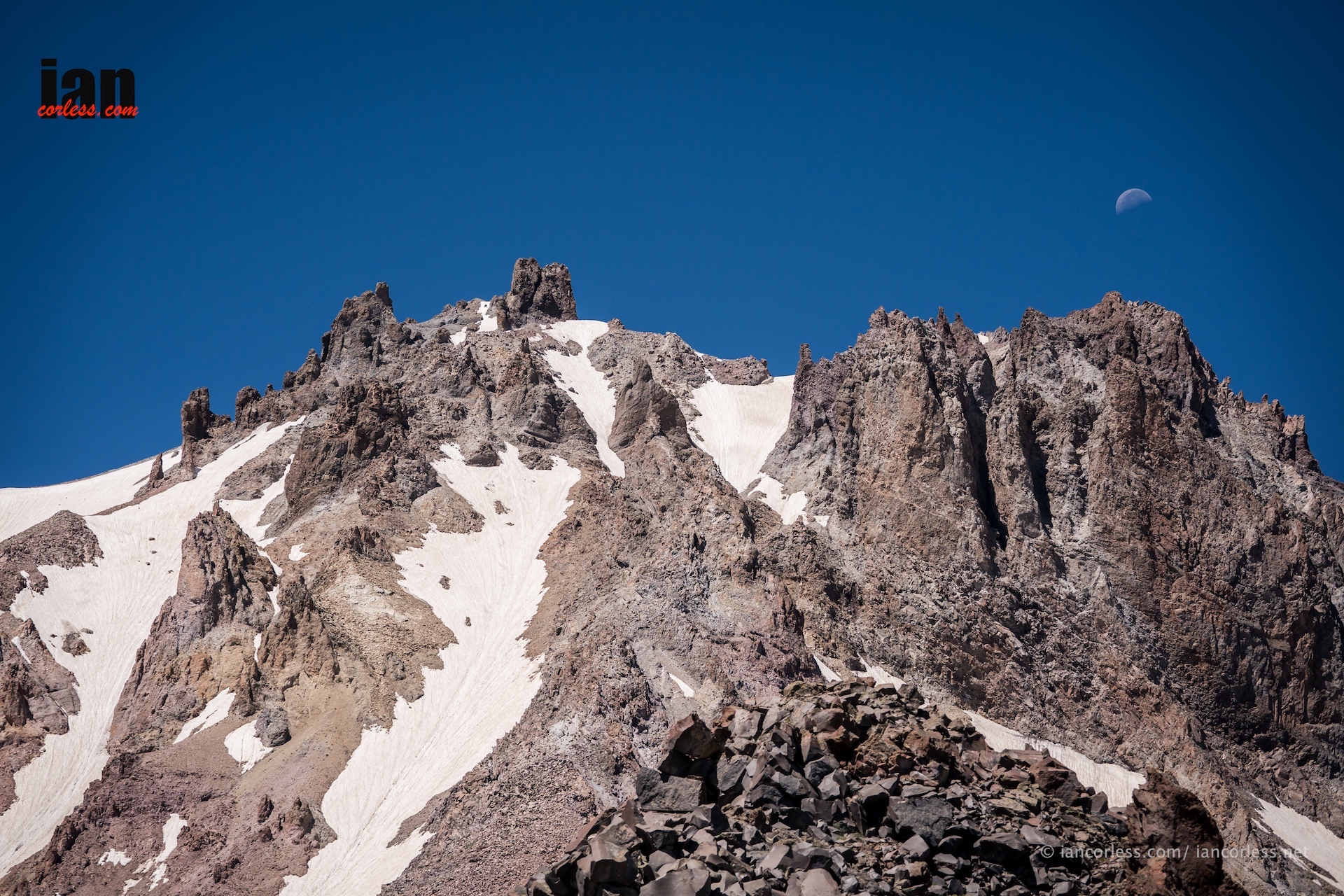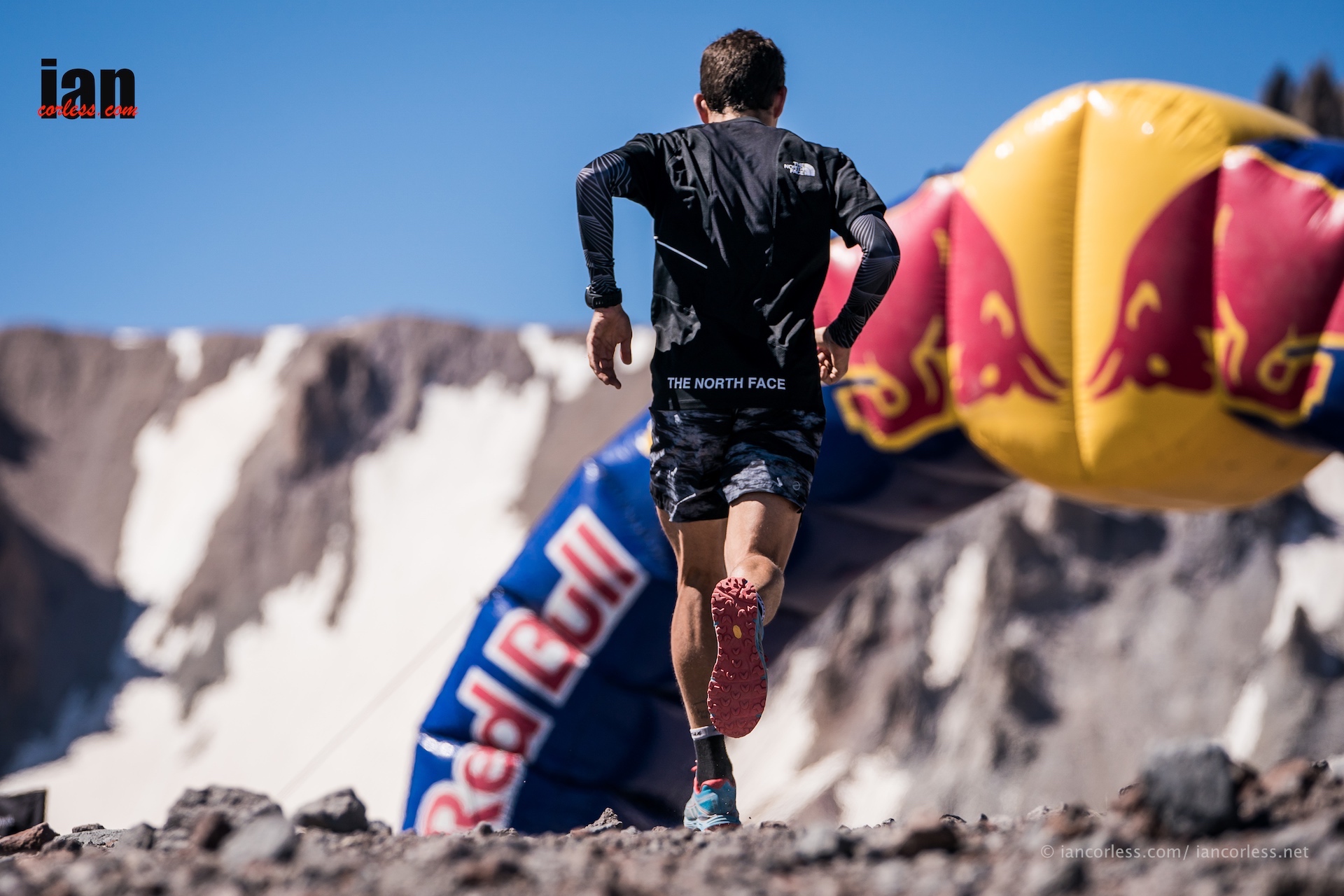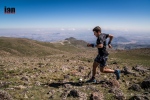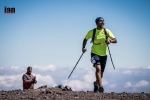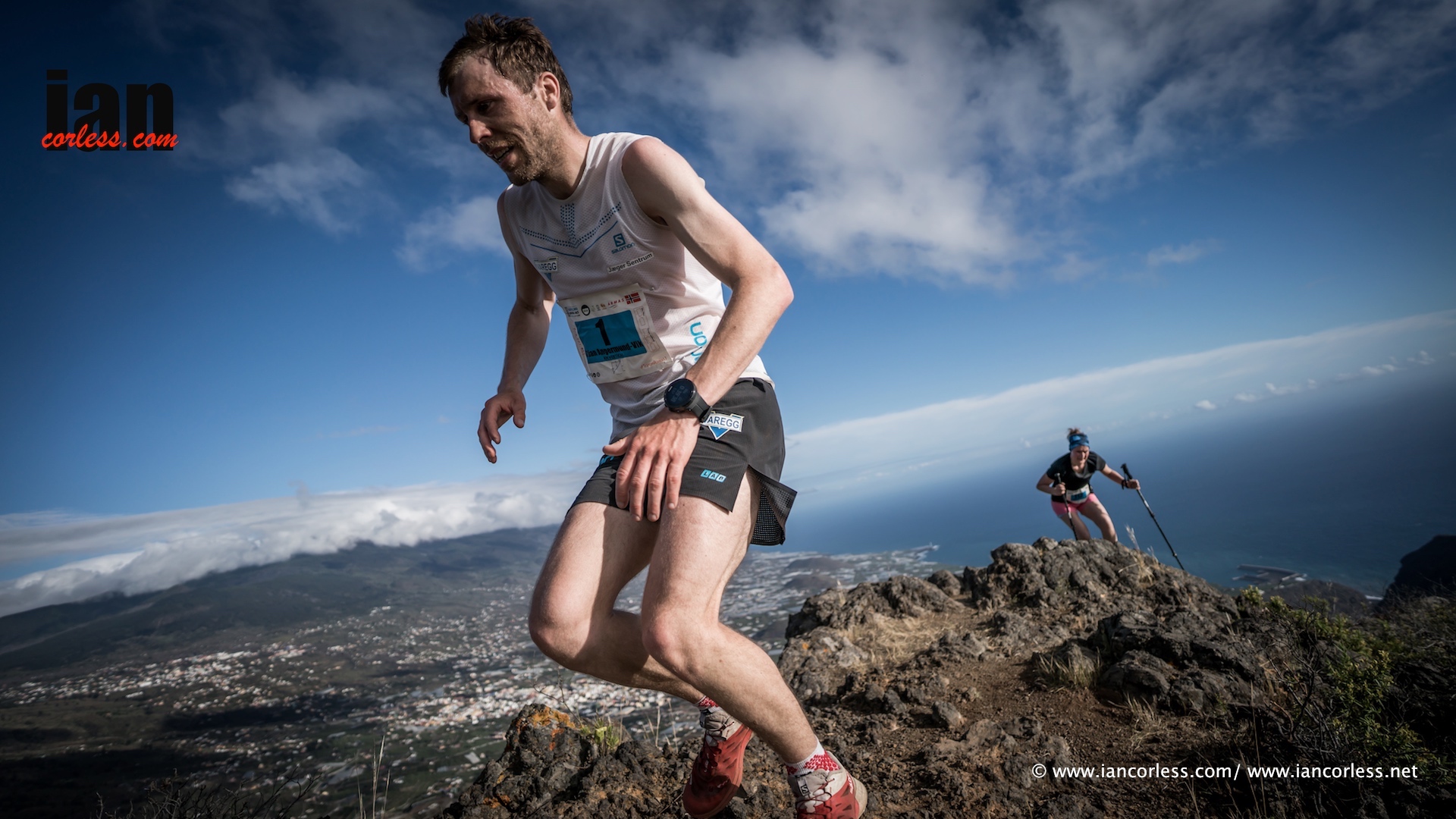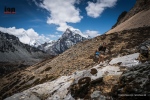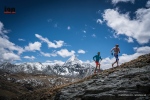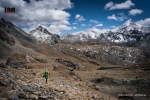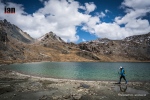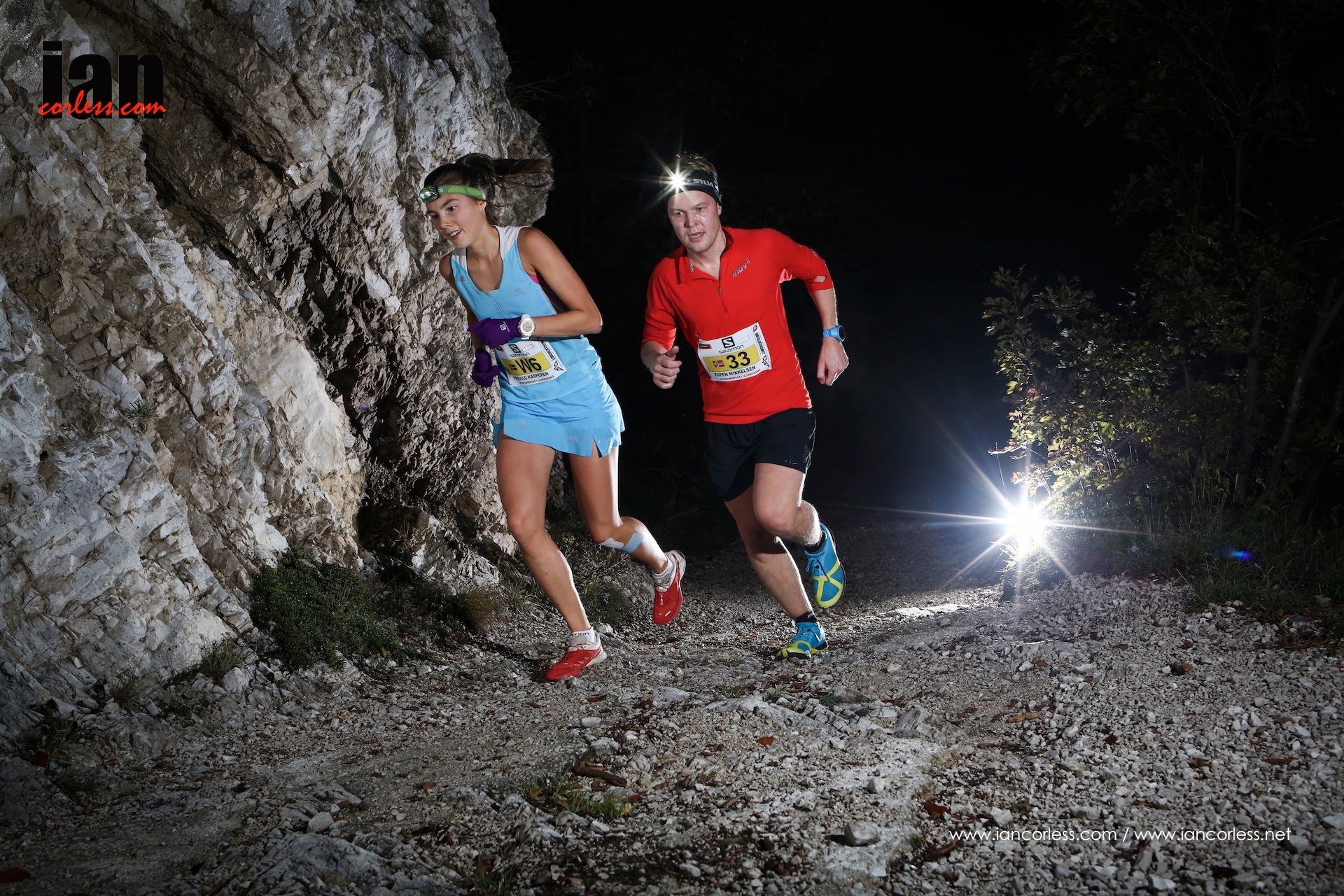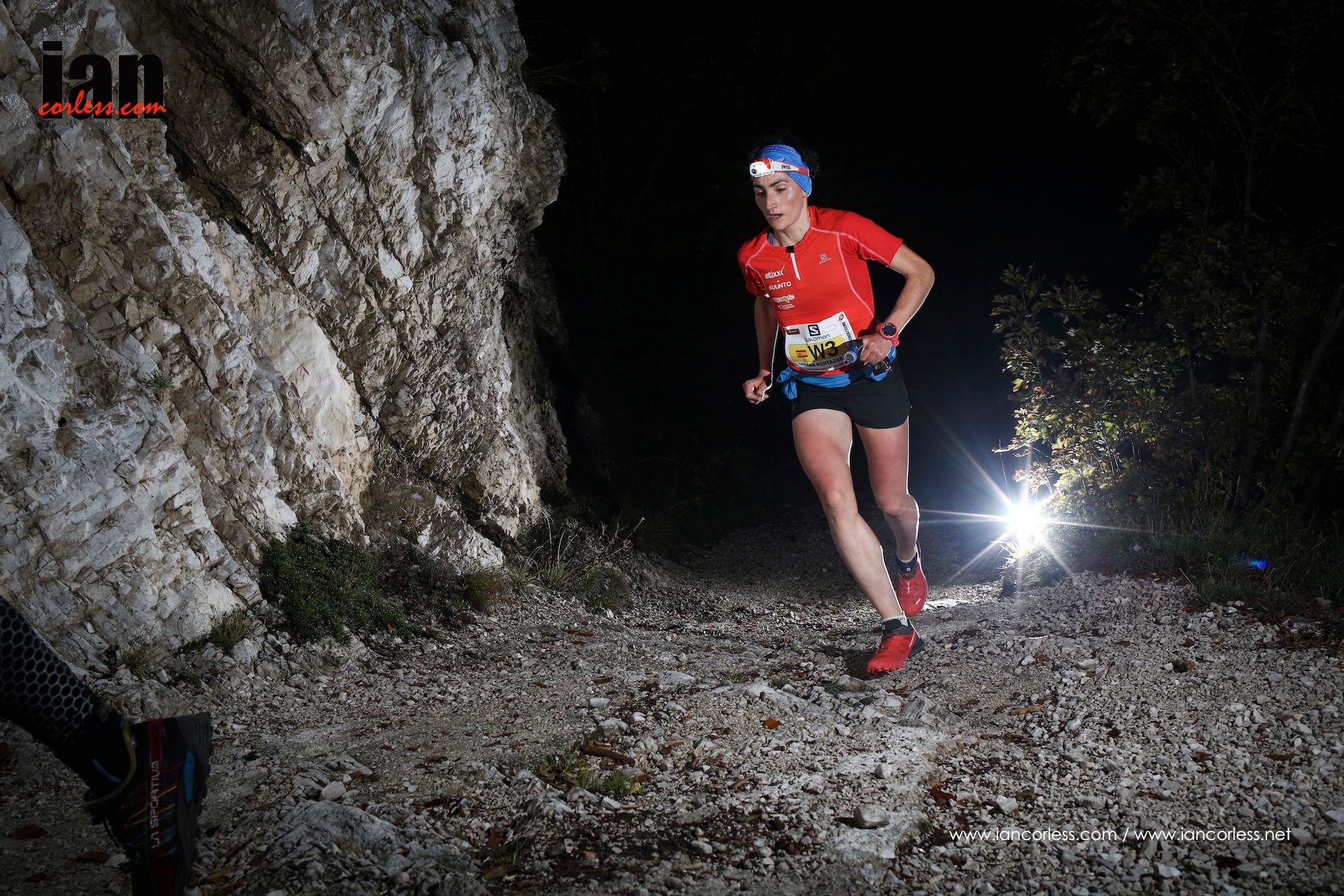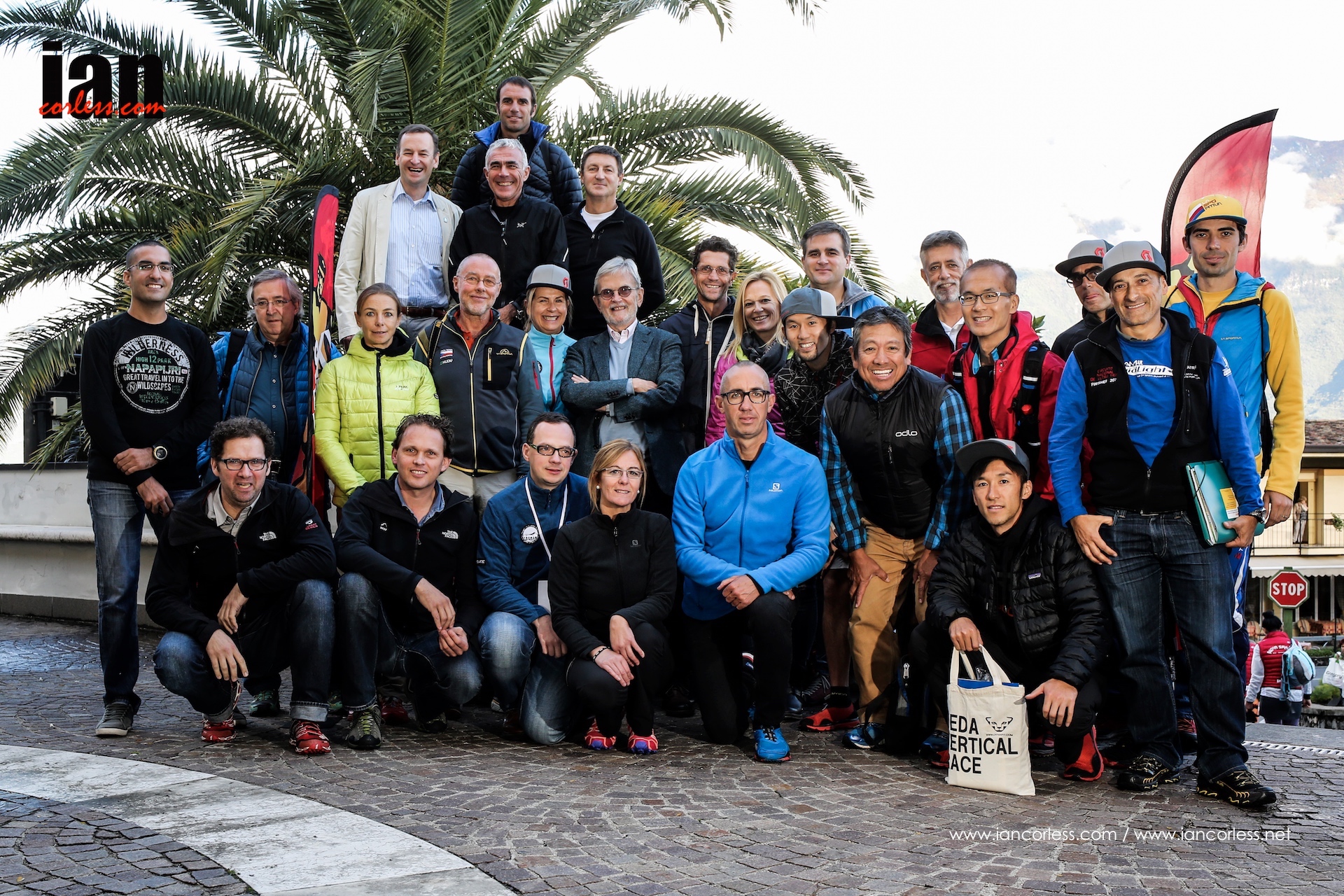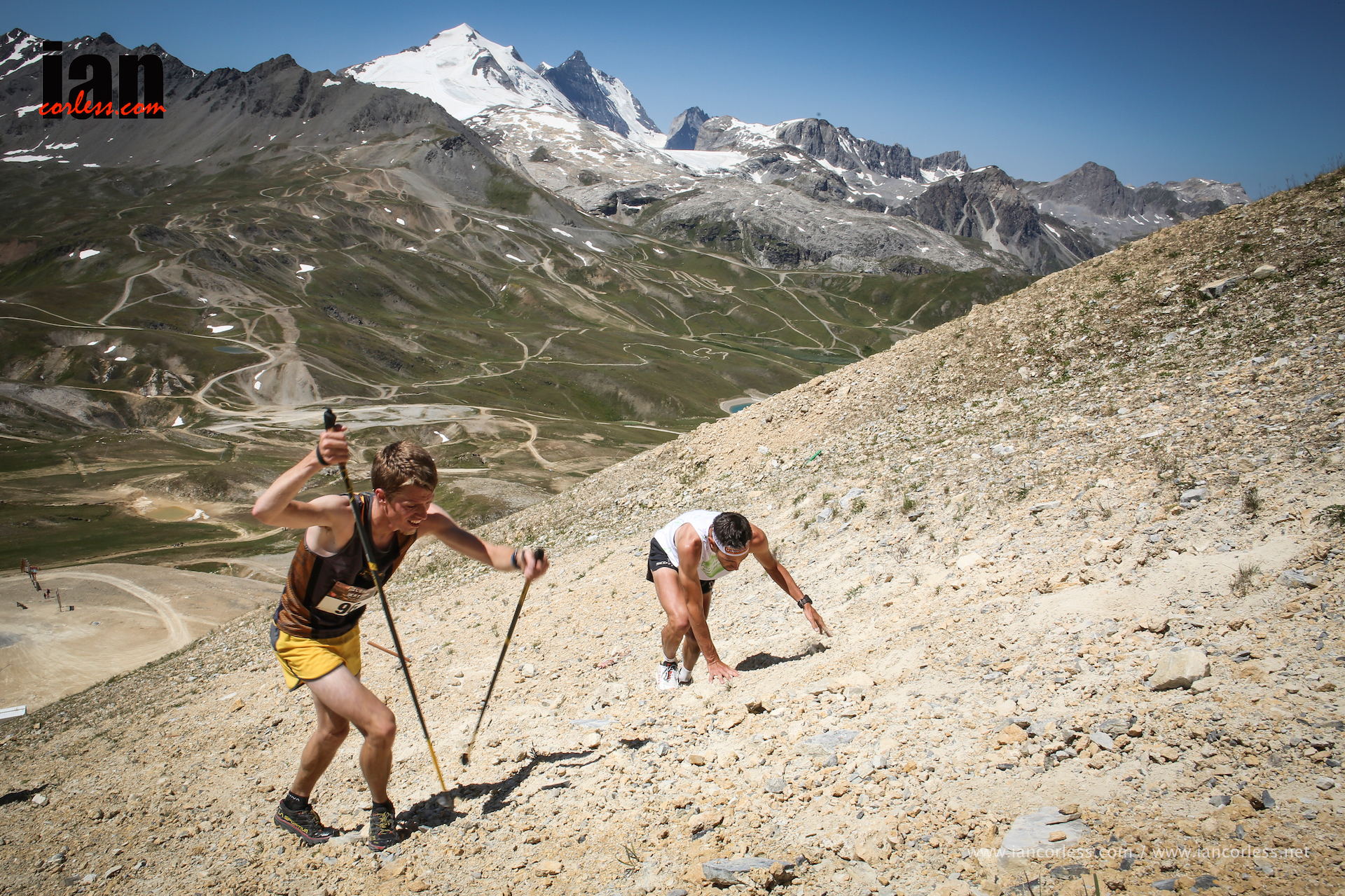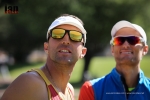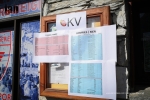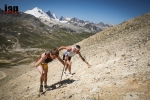
Italian brand, La Sportiva, take running shoe specialization to the next level with the VK Boa®, a shoe that is specifically designed to go mountain as quickly as possible in the lightest package available.
To understand the shoe, you need to understand its purpose.
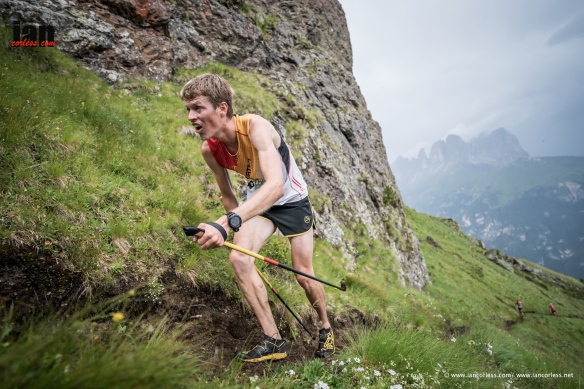
The VK in the name refers to Vertical Kilometer® a sport created on the slopes of Monte Rosa in 1994 by Marino Giacometti, the founder and creator of the sport, Skyrunning. Governed by the ISF, the International Skyrunning Federation, the sport is simple in concept – To cover 1000 vertical meters in a course that is less than *5km long with average incline of 20%. Double (2000m) and triple (3000m) VK’s also exist.
Initially created for scientific research the VK concept grew and it has become a staple in the calendar of skyrunning with its own specific calendar and relative world and European champions. Often, a VK would be added on to a race weekend that included another longer race, the Dolomites being a prime example where a VK would take place on Friday and a SkyRace on Sunday. Competitors often do both races. The world record stands at 28-minutes 53-seconds by Philip Goetsch set at one of the steepest VK’s in the world, Fully, which covers the 1000 vertical meters in a course that is only 1.92km long. The finish line is 1500m altitude.
The VK sport was created in Italy and the La Sportiva brand was born in Italy, the synergy between the two is obvious.
To create a specific shoe for VK not only shows the demand, especially in Italy, for such a shoe, but also the enthusiasm for the sport. The 2020 the Vertical Kilometer® World Circuit, managed by SkyMan, was cancelled however, the ISF have confirmed the sport will continue and recently they announced a new 2VK circuit – HERE
La Sportiva VK Boa®
Like track spikes, the VK Boa is a very specific shoe.

It’s all about minimal weight, secure foot hold, grip and a package that turns the eye. I have to say, the classic black/yellow/red of La Sportiva has always appealed and here in the VK Boa® that is taken up a notch to make what I think is a really ‘sexy’ shoe.
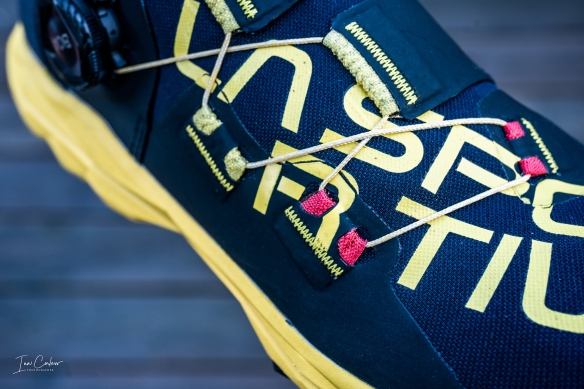
The striking look pulls you in and then you pick the shoe up, at sub 200g for a standard UK8 (230g for a UK9.5) this shoe is amazingly light.
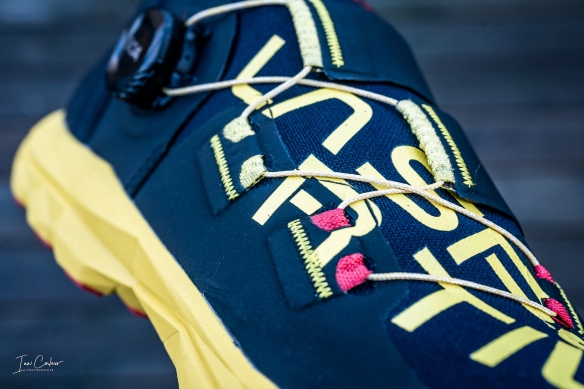
The upper is just one seamless sock with a narrow opening from which one inserts the foot. Three wide straps come across the shoe to create the foothold and structure and conventional laces have been removed to be replaced with the Boa® rapid closure system.

A minimal toe bumper offers toe protection.
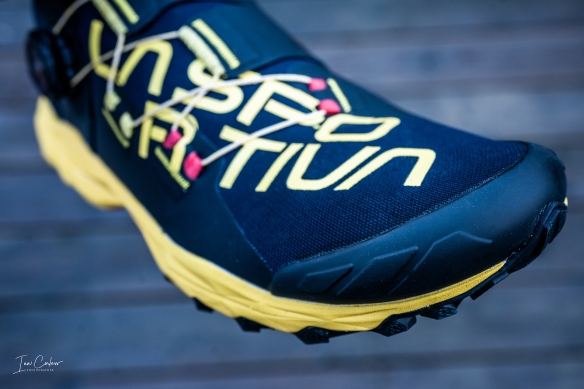

The outsole is a story of two halves: the front using a black semi-aggressive grip with relatively small lugs (25) the rear has a different configuration in red.
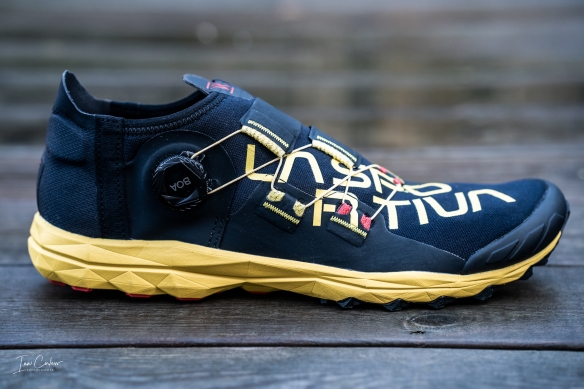
Cushioning, as one would expect is minimal but surprisingly more than I expected.
Drop is 4mm.
The shoe is described as being ‘universal’, but I do feel some support under the arch.
Sizing is true to size.
The Shoe

Firstly, getting one’s foot into the shoe is a little tricky. This shoe is designed like a Formula 1 car and as such, excess is taken away. One you have your foot inside, take time to wiggle your foot, make sure your heel is in the correct place and ensure that you pull the upper up, just like a sock.

There is no tongue. Tightening the shoe is done from the Boa® closure by turning the dial. Do this slowly making sure the laces sit where you want them. Taking time here will ensure a great foothold, particularly on the important Navicular bone.

The heel box is really impressive and rightly so for a shoe that is designed for going uphill. A lack of secure hold at the rear and it would prove really problematic. I’d go as far to say that the VK Boa® has the most secure and tight-fitting heel box of any shoe I have tried.

The toe box area, just like socks, is free of any reinforcement and extremely slipper like. It is not narrow and not wide, but the freedom of movement offered by the bi-elastic mesh would make this shoe work for most people. La Sportiva call it Low Volume which is designed for a tight fit following foot shape.
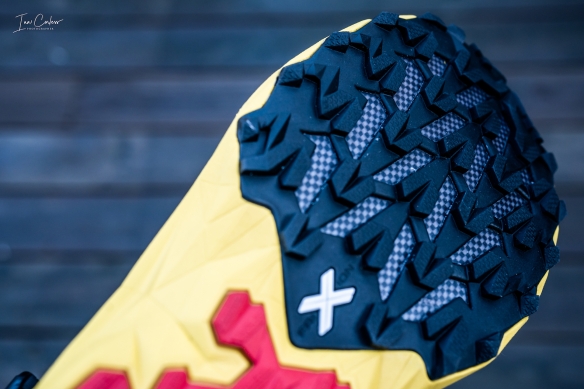

The outsole is very clever, La Sportiva know that when doing a VK, the front of the shoe is used almost 100% with only occasional use of the shoe rear. The outsole reflects this with two different grips and notably there is ‘rock-guard’ only at the front of the shoe. The outsole is designed to have as many contact points as possible. Frixion Red is a combination of grip, long-lasting wear and shock absorption. VK’s take place on grass, rock, stone, scree, mud and even ice, the outsole does a great job of handling each of the conditions.

The cushioning is compressed EVA and I was surprised how much cushioning was in the shoe, but it is designed for softer ground where the requirement for shock absorption is reduced. Completely understandable for a shoe designed for VK’s.
In Use
This is a very specific shoe and as such will have a very reduced market. It’s not a shoe that can-do multiple tasks, having said that, they VK Boa® may work exceptionally well on a short mountain race but downhill support and comfort would be compromised.
This shoe is designed to go up.
Considering that most VK’s are completed in 30-minutes for the elite men, around 35/40 minutes for the elite women and then 60 to 90-minutes for mortals, you get a picture that this shoe needs to be light.
Light they are; super light! They really do fit like gloves and I am still surprised at how well they hold the foot. I have had mixed experiences with Boa® closure systems previously but on this shoe it all clicks together. The Boa® (L6 type) system is a logical closure step allowing the top of the shoe to be free of seams and additional stitching and the three straps, just like in cycling shoes, comes across the foot to create a really superior hold. It’s all about efficiency and it makes a really nice aesthetic.
The shoes are extremely flexible and notably they excel in three areas.
- The hold in the heel area is superb, no, it is brilliant! The lack of slipping in the heel area for a shoe designed for going uphill is absolutely crucial and the VK Boa® may well be the best I have tried.
- The soft and flexible upper manages to provide enough structure and support but allows the foot to move and bend in the propulsive phase without restriction. Crucial for a VK when pretty much the entire race or run will be undertaken on the front of the shoe.
- The outsole is designed for purpose and I love the specific grip and rock-guard just for the front of the shoe where it is needed.
Precise, reactive, great foot hold, excellent proprioception and extremely flexible, the VK Boa® really is beautifully designed for the task it was created for.
Conclusion

This shoe is not for everyone and I applaud La Sportiva for creating such a specific shoe. Light and minimalist, they excel for the designed purpose and there is little to fault.
They look great, the Boa® system is a superb addition to the shoe that maybe is the best use of this product I have seen in a running shoe.
RRP is 170 euro, so, they are not cheap. However, such a specific shoe will have a long life as they will only be used for VK racing or training. More often than not, VK’s are located close or near cable cars, so, the need to run back down is not required. Having said that, if one does need to run down, the VK Boa® does lack some of the structure a conventional run shoe would have, so, that needs to be considered.
If VK’s and going uphill as fast as possible is your think, the La Sportiva VK Boa® are most definitely worth checking out.
Please support this website. I believe everyone deserves to read quality, independent and factual articles – that’s why this website is open to all. Free press has never been so vital. I hope I can keep providing independent articles with your help. Any contribution, however big or small, is so valuable to help finance regular content. Please support me on Patreon HERE
Follow on:
Instagram – @iancorlessphotography
Twitter – @talkultra
facebook.com/iancorlessphotography
Web – www.iancorless.com
Web – www.iancorlessphotography.com
Image sales –www.iancorless.photoshelter.com








